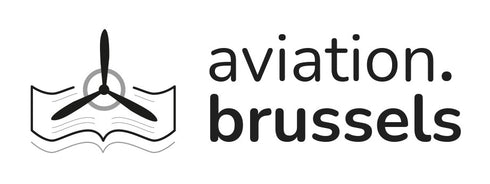INSTRUMENT FLYING











Prix régulier 20,00 € TTC 6%
Characteristics
| Book cover finish | Hardcover ( square back binding ) |
| Special features | Third Edition, Dust jacket |
| Condition | Used good (highlighted words inside, fold mark on the back flap) |
| Number of pages | 330 |
| Published date | 1986 |
| Language | English |
| Size | 15 x 21.5 x 2.5 cm |
| Author | Richard L. Taylor |
| Editor | Macmillan |
Description
For the experienced pilot or anyone just beginning to think of the instrument rating...
INSTRUMENT FLYING
This, the Third Edition of Richard L. Taylor's classic guide to IFR proficiency, is thoroughly up to date and broader in scope, including recent developments that affect day-to-day IFR operations. Advances in aircraft performance, avionics, and procedures now are combined with basic IFR technique for a complete "you are there" approach to safe and efficient instrument flying.
Two completely new chapters provide potentially life-saving information on handling IFR emergencies-how and why these are resolved in ways unique to flying instruments. A new section on Partial Panel describes with typical Taylor clarity the specially modified control and scanning methods needed to survive attitude instrument failure in IFR conditions. And there is new material on how to cope with other IFR glitches, ranging from a popped cabin door, an electrical failure, and icing, to an engine-out situation.
Airborne weather detectors-Stormscope and weather radar-are evaluated in the expanded Enroute Procedures section of this edition. Each is compared with the educated human weather eye, and for thunderstorm avoidance, the eyes have it.
Another new feature is the addition of a number of actual case histories of incidents showing how not to operate as an instrument pilot. Taylor has found that one of the best ways to fly safely is to study and profit from the mistakes of others.
"Instrument Flying is unique in its application to both extremes of pilot skill levels...it is easily the most understandable text for the IFR beginner, and on the other hand, it offers a sound review of those very practical, everyday situations and procedures which are so valuable to an experienced pilot, or one returning to the ever changing world of IFR operations. I recommend it to any pilot who wishes to be at his best in the instrument system.
-John L. Baker, President, Aircraft Owners and Pilots Association
ABOUT THE AUTHOR
Richard L. Taylor, award-winning author of many articles and five aviation books, is an Associate Professor of Aviation at the Ohio State University, where he directs and teaches all levels of the flight curriculum. In a military/civilian flying career, he has achieved Command Pilot rank in the Air Force Reserve, as well as the Airline Transport Pilot certificate. Taylor is also an active aviation consultant. He lives in Columbus, Ohio.











